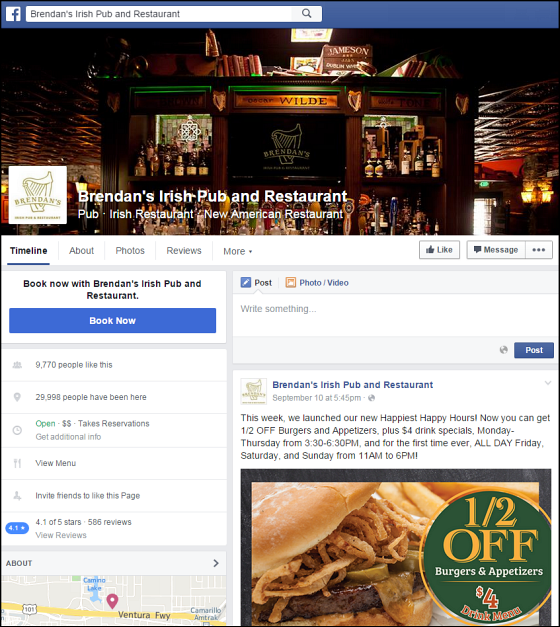Social Media Marketing: 4 steps to identifying the ideal social media platform for your company
Recently, I spoke with a graduate business class about social media marketing and how the MECLABS’ heuristic can be used to optimize social media ads and pages. The MECLABS Institute is MarketingSherpa’s parent company.
However, the biggest question coming from the class was which social media platforms would be the best to invest in.
How does a marketer determine where to place their efforts? Casting a wide net might seem like the best answer, but that typically results in an unnecessary waste of time and money.
The key is to identify which social media platforms will be conducive to your relationship with consumers.
Below are four steps to help you determine where you should invest on social media.
Step #1. Address consumer value proposition
At the foundation of every marketing effort is the value proposition. Once you can securely address the question “If I am your ideal customer, why should I purchase from you?” then you can move into analyzing your data to better understand this consumer.
Everything from age, gender, location, interests and behaviors can provide essential clues to which social media platform will perform best for you.
In addition to understanding your consumer, you need to understand your business and its goals. For example, let’s look at a couple of the dilemmas the graduate students were investigating:
- Local pub
- Do we want to reach potential patrons outside of our area?
- Do we want to foster an environment of tighter-knit groups of regulars?
- Health club/gym
- Do we want to generate fresh leads?
- Do we want to market services and products to current customers?
By answering these questions, you should be able to narrow down your choice of channels to a manageable list of appropriate sites.
For example, a gym looking to generate membership leads is unlikely to have maximum success on LinkedIn. A pub wanting to create an online “fan” space for regulars might have better luck with Facebook than Yelp.
Step #2. Review previous campaigns
With an understanding of your customer and your goal, now would be a good time to review campaigns and tests you have run in the past.
What have consumers — specifically those you desire to target — responded to (both positively and negatively)?
Based on your goals and target audience, you should think about what makes sense to run from a customer lens.
For example, if you own a local pub, does it really make sense for you to invest significant resources in a Tumblr account? Testing will tell but it may make more sense, from a consumer standpoint, to invest in a Twitter account that allows you to share specials and events.
Step #3. Invest in content creation
Blog posts, specials, images, events, meet-ups, products, background — the content you can share with a social media audience is nearly endless.
Not only does your content need to be relevant and interesting to consumers, it also needs to be appropriate for the platform. By appropriate, I mean sensible.
For example, you own a gym and have designed a coupon targeting potential new customers. Which platforms would a gym coupon meant to generate leads be most appropriate on? Likely Facebook, Twitter and Instagram would do well because of the option for current customers to share and the ability of the post to show an image of the coupon.
Yelp might also perform well for consumers doing research on local gyms. However, platforms such as Pinterest and LinkedIn might make marketing a coupon for new consumers more difficult than necessary to achieve results.
Step #4. Connect with your customers
Ultimately, the determining factor in identifying the ideal social media platform comes down to connecting with your consumers.
- Will my ideal customer find value in connecting with my Facebook/Instagram/etc. page?
- Do I have the capabilities to invest in multiple ways on multiple platforms?
- Is the content I have available (or the ability to create) appropriate on these platforms and for my consumers?
- Am I able to achieve the desired results through this platform?
Although I wish I could recommend a specific platform for you, I can’t. However, I can guide you to making a better choice.
Let me know in the comments how your social media campaigns are performing. Have you had success on some platforms and total failure on others? What do you think made for a successful or failed social media campaign?
You might also like
MarketingSherpa Summit 2016 — At the Bellagio in Las Vegas, February 22-24
Social Media Marketing: Over 120% increase in daily activity for app due to visual social media campaign [from MarketingSherpa]
Social Media Marketing: Small sporting goods store sees 1,100% ROI increase with Facebook coupon [from MarketingSherpa]
Categories: Marketing Facebook, instagram, social media, social media marketing












What an incredibly helpful blog post! In regards to Step #3, I also think that consistency is key. When people peruse the various social media channels, they like to see users that are consistent. Channels that are spotty or rarely used do not attract followers/potential customers. Thank you, Kylie!
Thanks Melissa!
I absolutely agree with you. It’s frustrating, from a consumer’s standpoint, when you want to follow a company on a particular social media site, but that company decides to spread their content lightly all over the place instead of truly investing where the consumers are interacting with them or where it makes the most sense.
Thanks for the comment!
Thanks Kylie! That was a great post! Social Media Marketing is one of the important part of business around the globe. I was attracted with Step 4, we all that through the help of social media marketing we are able to communicate with our customers.
This is a good 4 item check list for identifying the social media platform for you. I would like to also add that if you’re targeting a certain age group, especially the teens, Twitter would be more likely to be used. Facebook is a safer shot when it comes to gathering a following as most of the people visit this platform a lot each day but most of the teens have been steering into Twitter now. So you might want to keep this in mind.